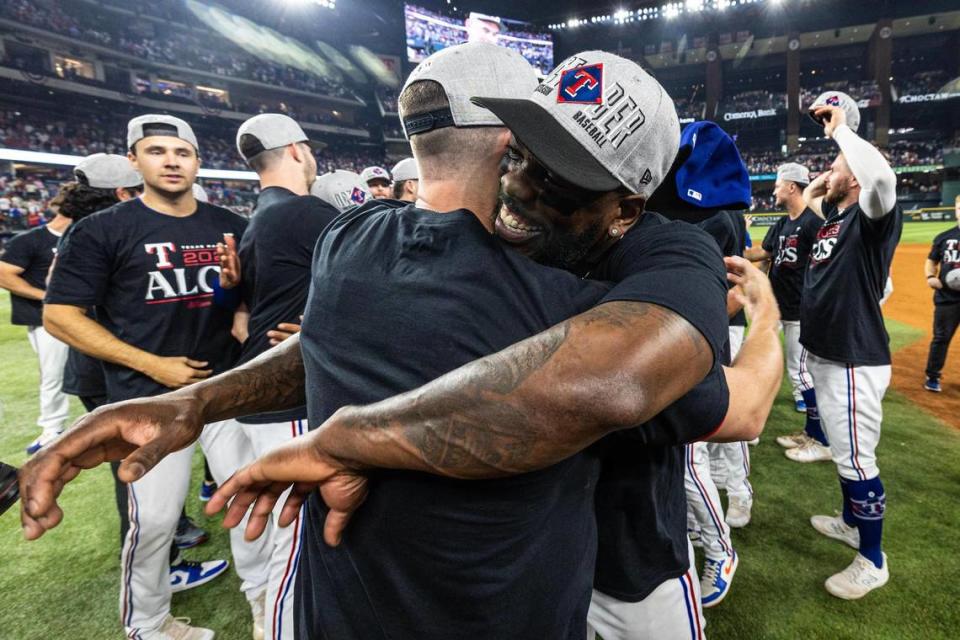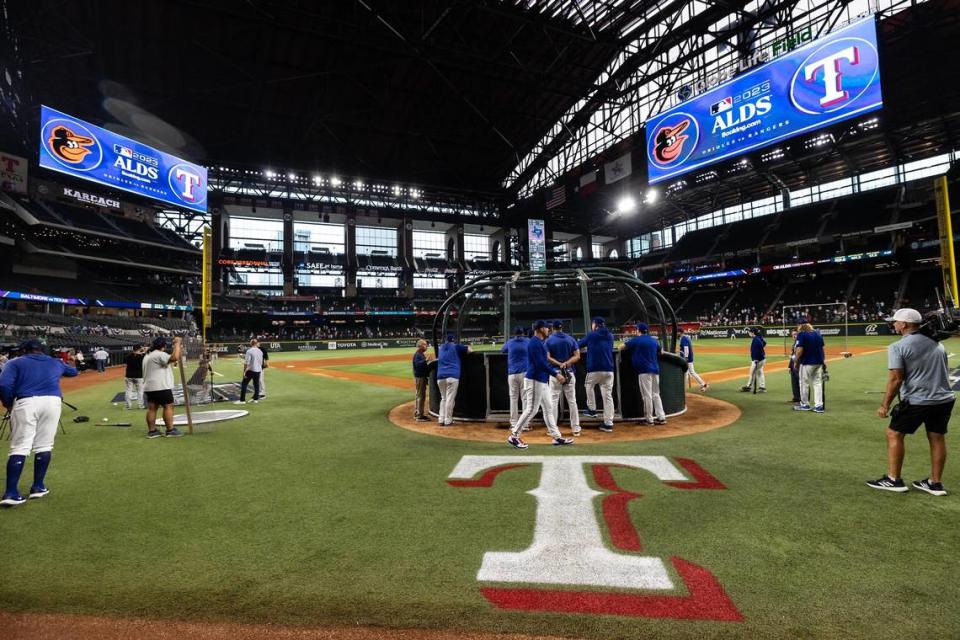You will not believe why MLB had the Texas Rangers close their roof in the playoffs
When Hollywood remakes “Field of Dreams” the new version will include a baseball field made of synthetic sport turf under a retractable roof housed over not a corn field but legalized marijuana plants.
The message of the new film will be, “If you build it, we will close it.”
Because baseball is no longer meant to be play outdoors but inside a venue that can compete with your living room couch and that 775-inch HDTV.
On Tuesday, the Texas Rangers hosted their first ever playoff game at Globe Life Mall, and the game-time temperature was 78 degrees, overcast with a slight breeze. The roof over The Mall was closed.
Baseball time in Texas is now an indoors affair.
For you “particularists” out there, Tuesday night was technically not the first MLB playoff game played at Globe Life Field, which opened in 2020.
Because COVID did not exist in Texas, MLB moved some of its 2022 postseason to Arlington. The last playoff game here was Game 6 of the 2020 World Series between the Rays and Dodgers, in front of about 11,437 masked-up, socially-distanced fans.
The roof was closed on that October 27 evening because it was cold, wet and rainy outside. Those conditions are why you spend another $300 million on an already over-priced stadium where the term “budget constraints” is more for comedy relief than a rule.
You have a roof that can be opened for weather like, I don’t know, 78 degrees, a little overcast and a slight breeze. Weather like Arlington had at 7:04 p.m. on Oct. 10, 2023.
When it comes to needless, wasteful spending, the only powers that can compete with Hollywood and our government is big league sports, led by our two teams in Arlington, Texas.
MLB’s decision to keep the lid closed means there are now two venues in Arlington, Texas with retractable roofs that open almost as frequently as every other Winter Olympics.
The roof at AT&T Stadium is apparently dead-bolted, and no one can find, nor looks for, the key.
The Rangers played 11 home games this season with the roof open, and not once since May 21. The perfect time was Tuesday night for Game 3 of the Rangers’ American League division series against the Baltimore Orioles.
Apparently the reason MLB decided to keep the roof closed was ... wait for it, the humidity.
Somewhere Nolan Ryan, Fergie Jenkins, Michael Young, Buddy Bell, Ian Kinsler, Rick Helling, Juan Gonzalez, Pudge Rodriguez, Ruben Sierra, Ken Hill, Julio Franco, Adrian Beltre, Jim Sundberg, Tom Grieve, Rusty Greer, Josh Hamilton and every other former Ranger all laughed, and got sick, at the idea of not playing baseball in a little humidity. In Texas.
The suits at MLB don’t get it; humidity and Texas are made for each other, like peanut butter and jelly, Batman and Robin, or raging heart burn after eating at the State Fair. Some things are simply not to be altered, no matter how miserable the pairing.
Not only is there is no crying in baseball, but it’s not to be played in humidity, either.
Pretty sure there was humidity when the Rangers played at The Ballpark in Arlington, Turnpike Stadium, and back where they originally came from, Washington D.C.
Apparently when the humidity is high in Arlington, which is only about 498 days out of the year, the surfaces inside the new stadium can become fairly slick.
Not only could the Rangers not grow (wink-wink, cough-cough) real grass at their new stadium, its floors aren’t humidity-proof, either.
You know, $1.2 billion just doesn’t buy what it used to. That’s the final price tag to build The Mall, of which the good people of Arlington contributed only about $500 million.
Between Globe Life Mall and AT&T Stadium, Arlington tax payers combined to pay about $825 million for two stadiums that feature retractable roofs that do apparently work, but are seldom used.
Not much the Rangers could do about this; MLB made the call.
Like any construction project, we will know what to do next time the Rangers need a new stadium, probably around the year 2028.
It will be a $5.5 billion, tax-payer funded, 19,000-seat stadium with a retractable roof and a dehumidifier.




